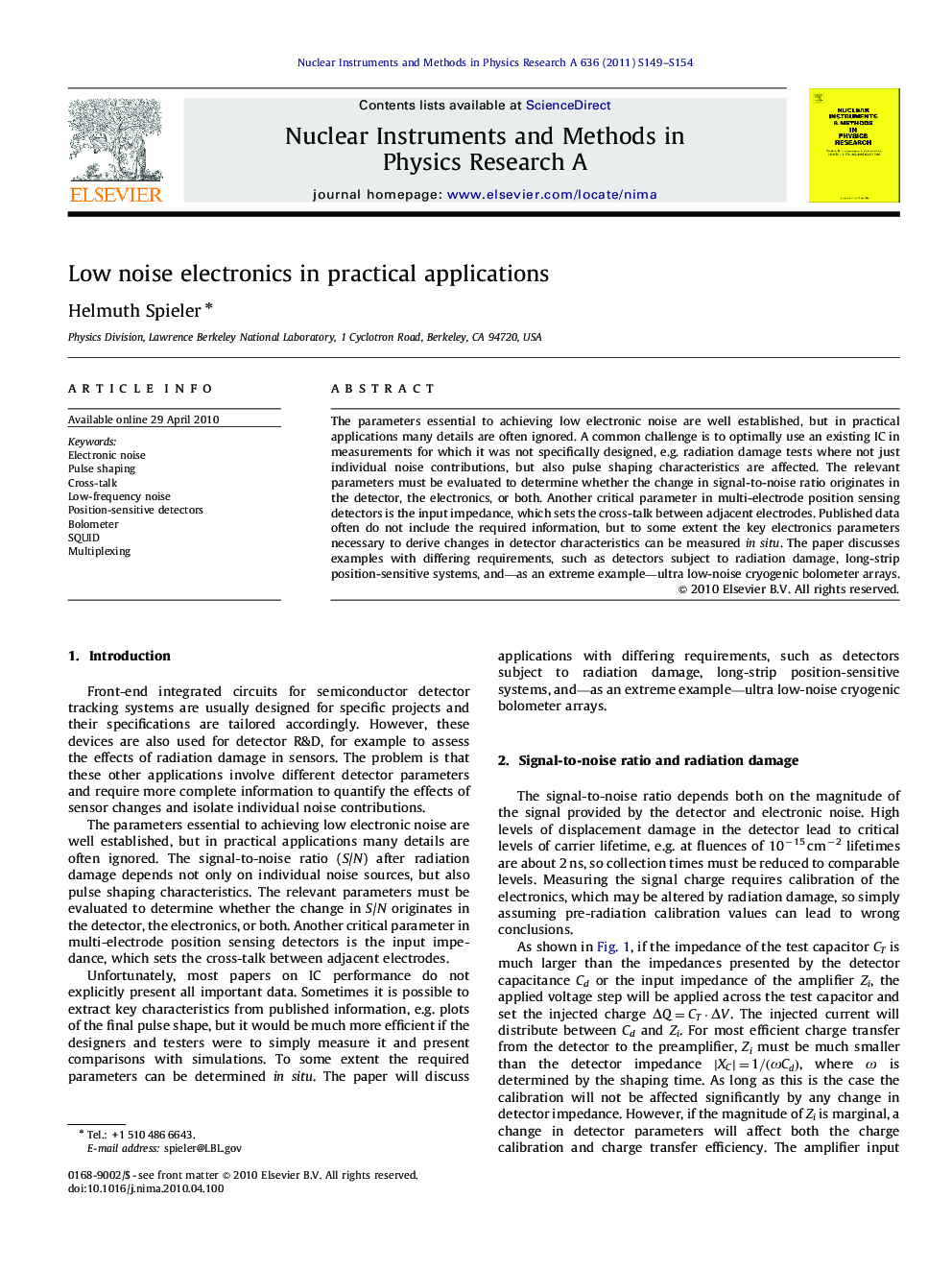| Article ID | Journal | Published Year | Pages | File Type |
|---|---|---|---|---|
| 1825200 | Nuclear Instruments and Methods in Physics Research Section A: Accelerators, Spectrometers, Detectors and Associated Equipment | 2011 | 6 Pages |
The parameters essential to achieving low electronic noise are well established, but in practical applications many details are often ignored. A common challenge is to optimally use an existing IC in measurements for which it was not specifically designed, e.g. radiation damage tests where not just individual noise contributions, but also pulse shaping characteristics are affected. The relevant parameters must be evaluated to determine whether the change in signal-to-noise ratio originates in the detector, the electronics, or both. Another critical parameter in multi-electrode position sensing detectors is the input impedance, which sets the cross-talk between adjacent electrodes. Published data often do not include the required information, but to some extent the key electronics parameters necessary to derive changes in detector characteristics can be measured in situ. The paper discusses examples with differing requirements, such as detectors subject to radiation damage, long-strip position-sensitive systems, and—as an extreme example—ultra low-noise cryogenic bolometer arrays.
